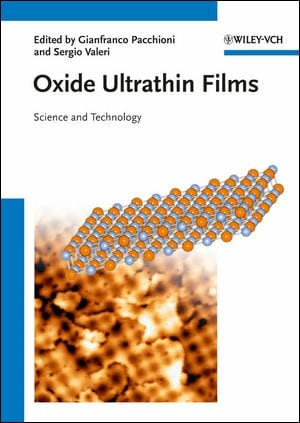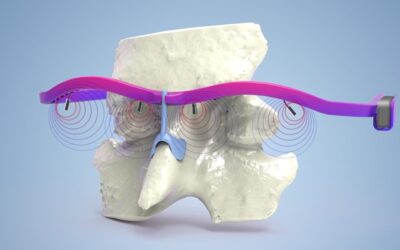 Oxide Ultrathin Films
Oxide Ultrathin Films
Gianfranco Pacchioni (Editor), Sergio Valeri (Editor)
Hardcover
368 pages
US $185.00
Reviewed by Dr. Charles Dunnill, University College London.
The book outlines a number of interesting concepts and processes concerned with the preparation and analysis of oxide ultrathin films. It covers a huge range of topics within the 14 chapters, and does so in a way that is relatively easy to read giving good insight into each topic often using case studies to highlight the ideas and concepts of discussion, thus allowing the reader to explore the material. As mentioned in the preface, it is very hard to define what is and what isn’t an “Ultrathin Film”. They have tentatively described “Ultrathin Films” as being < 100 nm, however it soon becomes evident that this range could in many respects be split into a number of sub categories. Far more interesting to me than the definition is the way in which the physical and useful properties of the material change with respect to film thickness, in comparison to general bulk properties.
The first chapter concerns the synthesis and preparation of the ultrathin oxide films and was enlightening as to how to make thin films that were far thinner than the majority of the materials with which I have experience. I was especially interested in how to make films by CVD using the adsorption of a monolayer of precursor. Multiple CVD runs can then build up the film layer by layer until the desired film thickness is achieved. Overall the chapter shows an interesting range of techniques without going into too much scientific detail as to how they work. Some of the techniques could indeed have an entire book written about them, and in many cases do. A great read for someone with ideas of preparing ultrathin films but with little knowledge of how to actually achieve the desired results. This chapter would give a good insight into how these could be achieved as well as direction towards further reading via the references sections.
The second chapter on analysis techniques again shows a brief description for a large number of many interesting and relatively unknown techniques that allow for the characterisation of the ultrathin films. May of the everyday techniques using X-rays or electrons can be “beefed up” using synchatron radiation to allow the greater resolution needed for the characterisation of the ultrathin films.
Chapter 7 was an insightful view into the use of ultrathin films for catalysis and uses two case studies to demonstrate the underlying threads from the authors. In the first case study gold nanoparticles are deposited onto MgO for the catalysed oxidation of CO. FTIR spectra are utilised to show how there is a deferring effect of the gold on the CO bonding given the changing surface charge and structure of the gold. The second case study concerns the use of oxide ultrathin films on different substrates on the oxidation of methanol to formaldehyde. The support plays a critical role as would be expected with ultrathin films. As the film gets thinner there is likely to be a greater interaction with the underlying substrate. Ultrathin films would therefore be expected to have a high level of interaction between the catalyst, the support and the reactive particles. 3-8 layers of atoms appear to be the range in which the catalysis is most effected with the different substrates including: SiO2, Al2O3, ZrO2, TiO2 and CeO2. The CeO2 showed the highest reactivity in this case with SiO2 the lowest. It is fascinating how fundamental shifts in our understanding and knowledge help to devise methods of doing chemistry more efficiently and at lower environmental cost and could have huge benefit to all in the future.
Chapter 9 concerns the use of oxide ultrathin films in the application for solid oxide fuel cells. This is one of the key developments in my mind necessary for the provision of clean energy and the continued power intensive lifestyle that we in the West take for granted. The chapter covers an insightful look at how and why Solid oxide fuel cells are better than the more traditional PEM types and looks at cell design. Conductive oxide films obviously play quite a large part in the design of the solid oxide fuel cell set-up, with details of the types of film and preparative methods discussed. CVD routes to Y2O3-stabalised ZrO2 thin films for instance. These films unsurprisingly have many physical properties that change with respect to thickness within the ultrathin film range and there is shown some very neat work as to the properties and measurements of such films. A lot of data is shown in the many graphs contained within the pages of this chapter with some of it being quite confusing however the text does a good job of explaining the general trends and important conclusions. Some time is spent at the end discussing the various configurations of the solid oxide fuel cell set-ups.
All in all, the book was well put together and well written. There are lots of diagrams throughout which aid in the understanding of some of the very complex concepts throughout, as well as a good use of case studies to reinforce the understanding and bring to life the concepts. This is a highly recommended book for an insightful look at any of the numerous topics that are discussed.














